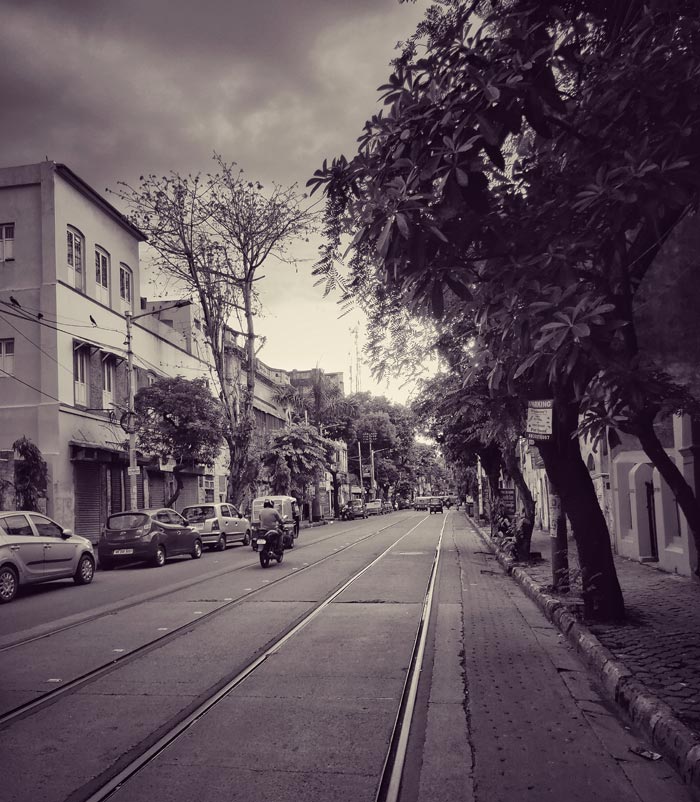The oldest tram network still in operation in India and Asia is the one in Kolkata, West Bengal, India, which is run by West Bengal Transport Corporation (WBTC) following the dissolution of the Calcutta Tramways Company (CTC). It was founded in 1902 and is the second-oldest electric tramway in India (the Madras electric street tramway being the first). The network had up to 37 lines in the 1960s, but that
number was reduced to just 16 due to financial issues, poor maintenance, low ridership, the addition of road flyovers, the expansion of the Kolkata Metro, the slow tram speed, and perceptions that the trams were antiquated and took up too much road space. Currently, only six lines are in operation.Due to these problems, there have occasionally been discussions about permanently shutting down the network or scaling back system operations. Recent efforts to maintain the system with newer trams have also been made because it is also viewed as being environmentally beneficial and a symbol of Kolkata.
A 1951 agreement between the West Bengal government and the Calcutta Tramways Company led to the passage of the Calcutta Tramways Act of 1951. In exchange for taking over the tramways, the government reserved the right to buy the network with two years' notice on January 1, 1972, or at any time thereafter. Following Indian Independence, during the partition of the country, a large number of refugees caused a sharp rise in the number of people on Kolkata's streets. Due to an increase in the number of buses and autos, the city centre region began to become congested.
Therefore, the tram company decided to move the Dalhousie Plaza tram tracks from outside to inside the square. In 1952, it was completed. Esplanade terminus redesign occurred in 1960 as a result of an increase in the number of cars and pedestrians. The five tram routes that could be taken from the Esplanade at the time were Bentinck Street, Dharmatala Street (now Lenin Sarani), Chowrangi Road (now Jawaharlal Nehru Road), Dufferin Road, and Old Court House Street (now Hemanta Basu Sarani). There were three tram lines that could be accessed from Dalhousie Square: Old Court House Street (now Hemanta Basu Sarani), Hare Street, and Lalbazar Street. Four years later, a new bridge with tram tracks was built to replace the historic Majherhat bridge.
The Calcutta Tramways Company (Taking Over of Management) Act was passed by the West Bengal government in 1967, and it went into effect on July 19. Up to this point, Kolkata experienced its platinum age, when it had the most rolling stock, route kilometres, and passengers.
Today, the tram is recognised as one of Kolkata's distinctive symbols. In the city, tram service first became available in 1873. At that time, trams pulled by horses ran between Sealdah and Armenian Ghat. Despite being designed for passengers, the trucks also transported cargo.
These once ran between the ports and the interior. After 27 years, the city trams started using electricity. It was the year 1902. In Bengal, and particularly in the capital, anti-British sentiments were on the rise. Civil disobedience movements and demonstrations caught on like wildfire.
The Viceroy of India at the time, Lord Curzon, understood the necessity for a more rapid deployment of police units to the locations of anti-British activity. He then approved the use of tram carriages powered by electricity.
Between Kidderpore and Esplanade, the service was signalled to begin. The tram cars came from England. The electric tram first arrived in Asia in Kolkata. The Calcutta Tramways Act of 1951 was passed as a result of a 1951 agreement between the West Bengali government and the Calcutta Tramways Company. The city has struggled to exist for more than a century since tram vehicles were first introduced. The tram has resisted caving in to mounting pressure in spite of several obstacles from various directions. Tram route maps in undivided India were expanded from the second half of the 19th century to the middle of the 20th century. Up until 1920, Kolkata's transportation system depended on electric tramlines.
The tram was the most dependable mode of public transportation, even after public buses were introduced on Kolkata's protest-stricken streets. During that time, the majority of the tramlines were installed and expanded.
Tram service in Kolkata was efficient up until the 1960s. Around 300 trams used to travel between Kolkata and Howrah before to independence.
Tram tracks on the Howrah Bridge were removed in 1993, just 22 years ago, to make room for buses, vehicles, and trucks. 125 trams are now in use for daily service. After the Kolkata Metro was introduced and became widely used, equations, however, changed. Numerous regular tram routes had to be closed as a result of the grand old dame's steady fall in popularity.
The tram has seen Kolkata's transformation from a rebellious to a calm city. Trams still exist as a legacy of Kolkata and its magnificent past, even though their network has reduced due to urbanisation pressure. Trams are an antiquated means of transportation in other Indian metropolises and are despised by urbanites today.
However, because they are pollution-free routes of transportation, attempts are now being made to save this mode of transportation from extinction. The state administration recently implemented a number of initiatives to restore some of its former splendour. At the Esplanade tram depot, CTC has established the Smaranika Tram Museum. It is a tourist favourite since it is housed within a real tram (Tram No. 142, built in 1938) to preserve a living heritage.
By-
Sriparna Mukherjee
Amity University, Kolkata


Comments
Post a Comment